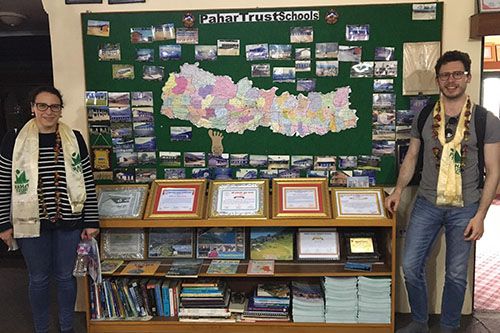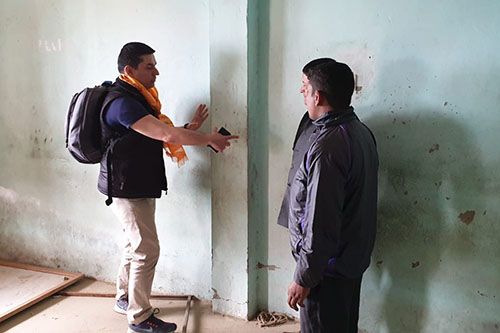By Emily Barrett, First Year, Physics
Following a devastating earthquake in Nepal in 2015 that killed 9,000 people, the SAFER Nepal Project led by Professor Anastasios Sextos of The University of Bristol seeks to improve the seismic safety of school and community buildings in Nepal and prevent future tragedies.
On 25 April, 2015, central Nepal was struck with an earthquake near its capital Kathmandu that reached a magnitude of 7.8 on the Richter scale – the highest for an earthquake in the region since 1934.
9,000 people were killed and many more injured, with thousands of structures being destroyed in Kathmandu and nearby towns.
Uniquely for this earthquake, data on the damage caused was obtained 6-11 days after the initial shock and before any major repair work took place, meaning this information could inform the repair process.
A team of engineers at the University of Bristol has sought to use this information to help minimise the damage caused to buildings by future seismic activity.


A paper published by the University of Bristol’s Department of Civil Engineering and other Universities on the earthquake damage noted at the time that most of the damaged buildings were stone or brick masonry, rather than reinforced concrete. This indicates that the earthquake risk could be reduced by improved structural design.
The SAFER (Seismic Safety and Resilience) Nepal Project seeks to resolve these design issues, by strengthening school buildings and improving their resistance to earthquake damage.
One method of improving seismic safety the project is exploring is to rest buildings on sliding surfaces, such that in the event of an earthquake, only the base would move while the building is unaffected. According to Professor Sextos, the team at SAFER Nepal is using this principle ‘to investigate low-cost, culturally acceptable and locally-sourced ways of co-producing a similar system’.
Testing is being performed using Bristol University’s seismic shaking table, in the Faculty of Engineering’s earthquake laboratory, to examine the performance of Nepalese classrooms strengthened using various techniques.
Professor Sextos says the team at SAFER Nepal are looking ‘to investigate low-cost, culturally acceptable and locally-sourced ways of co-producing a similar system’
This is alongside testing at the University of Southampton and the University of Buffalo, New York, with experiments being co-designed with partners in Nepal.
In order to leave a lasting impact on the community, the SAFER Nepal Project has sought to leave behind the necessary skills to rebuild by running local workshops and training sessions, and is developing an app that will allow local engineers to identify at-risk schools and test the properties of local building materials.
In collaboration with Save the Children, the SAFER Nepal team has surveyed school buildings and consulted with school management committees, teachers, and students. This will help with planning interventions, allowing children to get back to school safely.
University of Bristol research investigates the effects of climate change on pollinators and human health
University of Bristol part of €6.7 million EU Horizon project aiming to end hunger and thirst in the Horn of Africa
Professor Prem Nath Maskey from Tribhuvan University in Nepal has said: ‘The impact of the project lies in the importance of research and collaboration on the seismic resilience of schools’.
Ultimately, by working to improve not just the structural safety of buildings, but the resilience of the community in the face of natural disasters, the SAFER Nepal team hopes to leave an enduring improvement to the quality of life in Nepal.
Featured: Unsplash / University of Bristol
Are you impressed by the SAFER Nepal Project?







